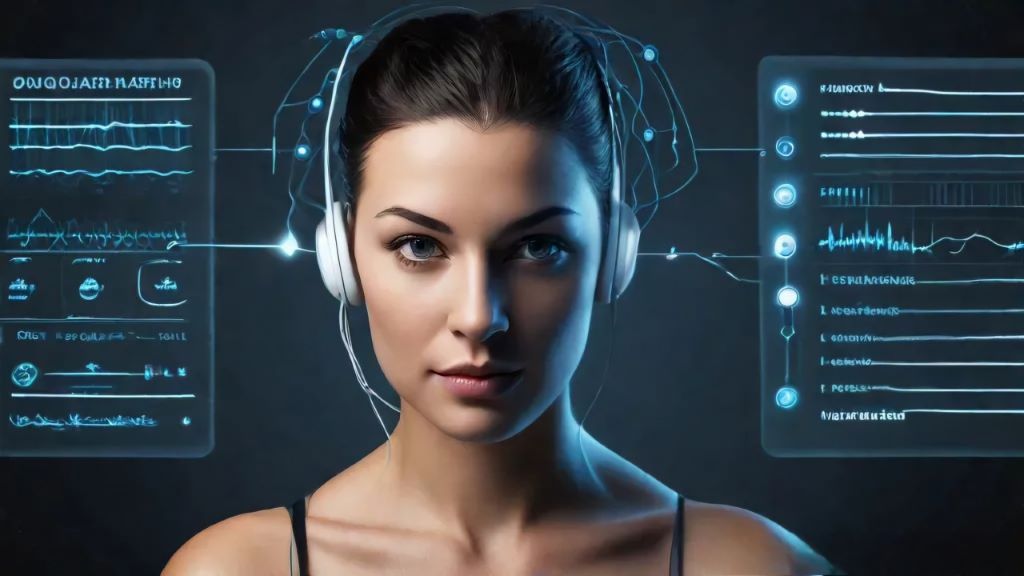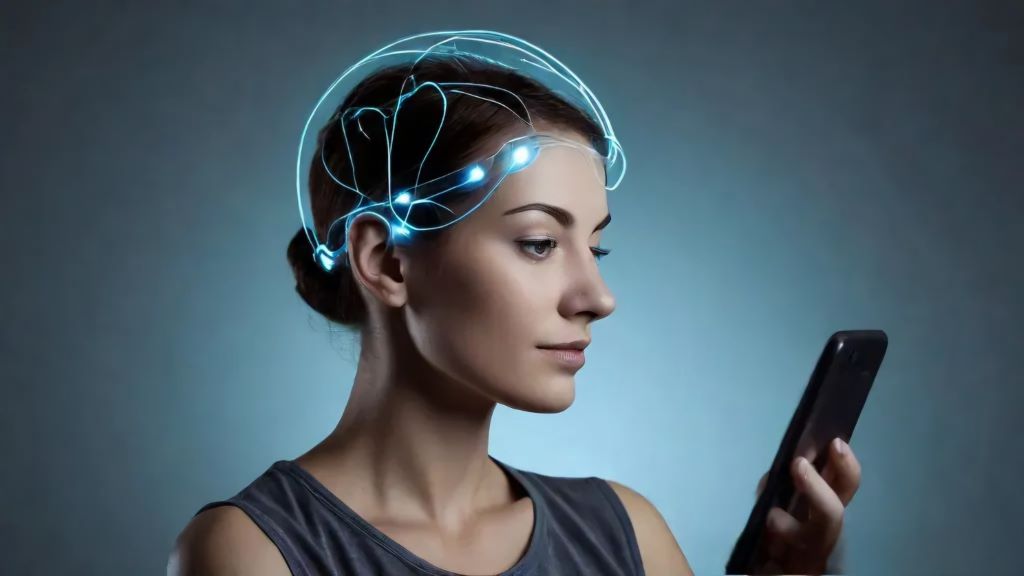Brainwave-Guided User Interface: The Future of Personalized Marketing?

As technology advances at a rapid pace, the intersection of neuroscience and marketing is unlocking new possibilities for understanding consumer behavior in ways that were once unimaginable. According to Fortune Business Insights, The "AI in marketing" market is expected to grow to $107.5 billion by 2028, showcasing the widespread adoption of AI-driven personalized experiences, which neuro-interfaces can enhance by interpreting real-time brain data.
One of the most exciting developments is the concept of brainwave-guided user interfaces, a new frontier where real-time brainwave monitoring enables hyper-personalized marketing and interaction between consumers and brands. While this may sound like something straight out of a science fiction novel, it is fast becoming a reality.
The Evolution of Brain-Computer Interfaces:
The concept of brain-computer interfaces (BCIs) has been around for decades, primarily explored in the medical field for helping individuals with disabilities regain control over their motor functions. However, recent advancements in neuroscience and machine learning have expanded the potential use of BCIs into various industries, including marketing. BCIs allow machines to interpret signals directly from the brain, transforming thoughts into commands that machines can execute. These signals—measured via electroencephalography (EEG)—can be used to understand cognitive states, emotions, and reactions. By processing this data in real-time, neuro-interfaces can offer entirely new ways to engage consumers.
According to HBR, Neuromarketing studies show that 95% of purchase decisions are made subconsciously, driven by emotional and cognitive factors. Neuro-interface systems like EEG can tap directly into these cognitive processes, allowing marketers to tailor their strategies to the consumer’s emotional state in real time. Imagine visiting an online store and being shown the products that best align with your mood at that precise moment. Or picture a digital experience where the content adapts based on your levels of focus, stress, or relaxation. This is what a brainwave-guided user interface promises: a shift from generalized, static marketing strategies to real-time, dynamic personalization that mirrors the fluidity of human emotions.

Real-Time Personalization:
The Game Changer: Personalization in marketing isn’t new. Brands have long used consumer data—ranging from browsing history to purchase patterns—to tailor content and offers. What makes neuro-interfaces different is the introduction of real-time data that reveals what a consumer is feeling right now. Instead of relying on previous behavior, companies can now adjust their messaging, product recommendations, or even colors and design based on immediate brain activity.
Take this scenario: A consumer enters an augmented reality (AR) shopping experience with an EEG device. As they browse, their brainwaves are monitored for stress levels, engagement, and interest. If the system detects stress, it might change the interface to something more calming, offering products associated with comfort, such as a cozy blanket or a soothing candle. If the system detects high engagement with a particular product category—let’s say tech gadgets—the interface could instantly provide more in-depth information or suggest complementary products like headphones or chargers. All this happens seamlessly, without the consumer needing to express their preferences. Real-time personalization, such as that promised by brainwave-guided interfaces, is even more impactful, with 44% of consumers stating that they would be willing to repeat a purchase if they had a personalized experience according to a Mckinsey study.
Practical Applications and Early Experiments:
Although still in its infancy, brainwave-guided marketing is already being tested in different contexts. Companies like Neurable and NextMind have been experimenting with neuro-interfaces to create immersive experiences, and while these are not yet mainstream, they offer glimpses into the future. For example, Neurable has developed a neuro-headset that allows users to control software applications using only their brainwaves. In one case study, the headset was used in an AR experience where users could navigate virtual environments simply by thinking. Imagine using this technology in digital retail spaces where users could "think" their way through an entire purchase experience, with real-time personalization adapting the journey based on cognitive states. Similarly, consumer electronics companies like Emotiv have created EEG headsets that detect stress, engagement, and relaxation. These tools can inform marketers about the emotional impact of their campaigns, helping them optimize ads that keep users more engaged while minimizing mental fatigue. However, despite the promise, some challenges remain.

Brainwave data is complex, and the accuracy of current models for interpreting these signals is still improving. In marketing, where nuance is critical, slight errors in interpretation could result in a poor experience for users. Reflection: How Will Brands Handle Ethical Considerations? As we move closer to this reality, one major question emerges: How will companies balance personalization with privacy?
Brainwave data is incredibly personal, and unlike other forms of data that users willingly provide, the brain’s electrical activity offers intimate insights into emotions, stress, and decision-making processes. If marketers are using brainwave data to guide their strategies, how do they ensure that this data is handled responsibly? Consumers might also be hesitant to share such personal information, even if the benefits of personalization are clear. Moreover, with growing concerns around data breaches and misuse of personal information, will people trust brands to handle their brainwave data securely?
According to Pew Research Center, 72% of consumers are concerned about their personal data being misused. These ethical concerns should lead brands and technologists to question how much personalization is too much. While neuro-interfaces could create more intuitive, engaging experiences, the potential for overreach is real.
Tips for Brands Venturing into Neuro-Interfaces:
1.Start Small, Test Frequently: While the potential of neuro-interfaces is immense, it’s wise for brands to begin by integrating EEG data on a smaller scale. Focus on specific, measurable outcomes such as improving engagement rates or reducing cognitive load during browsing.
2.Transparency is Key: Brands must be transparent with users about how their brainwave data is collected, processed, and used. Consumers need clear, accessible explanations of the benefits, and they should always have the ability to opt-in or out.
3.Prioritize Data Security: Brainwave data is sensitive. Marketers need to invest in rigorous security protocols to protect this information from misuse or unauthorized access.
4.Balance Personalization with Privacy: Consumers want relevant experiences but don’t want to feel monitored. Brands must find a balance between personalization and respecting consumer boundaries, particularly when dealing with something as intimate as brainwaves.
Final Thought:
The Promise and the Paradox Brainwave-guided interfaces present both incredible opportunities and complex challenges for brands. If done well, they could lead to an era of marketing that’s less intrusive, more intuitive, and genuinely personalized. However, the promise of personalization must be tempered with a deep respect for privacy and ethics. As marketers, we need to ask ourselves: What kind of future do we want to build? Should we prioritize personalization at all costs, or should we create systems that value human agency and privacy just as much as efficiency?
Reflecting on these questions will guide how we shape the next era of consumer-brand interaction.
- What do a well-balanced diet and a well-balanced content strategy have in common?
- Stories are the future of digital marketing
- Organic Content Marketing – A powerful tool to reckon with
- Content is King, but distribution rules the land. Are you invested in it?
- Three Content Marketing Predictions For 2018
- 3 Ways Chatbots Are Revolutionizing Customer Experience In Content Marketing
- 3 ways to balance promotional content with useful information to win the content game
- Organic Content Marketing – A powerful tool to reckon with
- What do a well-balanced diet and a well-balanced content strategy have in common?
- Mirror on the wall who is the real thought leader among all
- Do you have your CEO’s vote for your thought leadership campaign yet
- Pretty pictures and messages not enought to creat a brand anymore
- 5 reasons why you need Thought Leadership
- 3 reasons why organisations should drive reputation management through thought leadership
- Create Result-oriented Content Now
- Tips to Keep the Content Strategy for the Technology Industry Audience
- 5 ways Corporate Blogging helps you stay ahead!